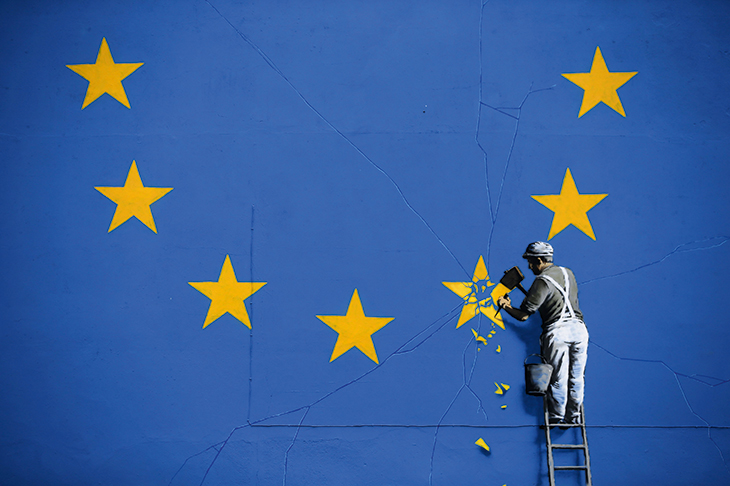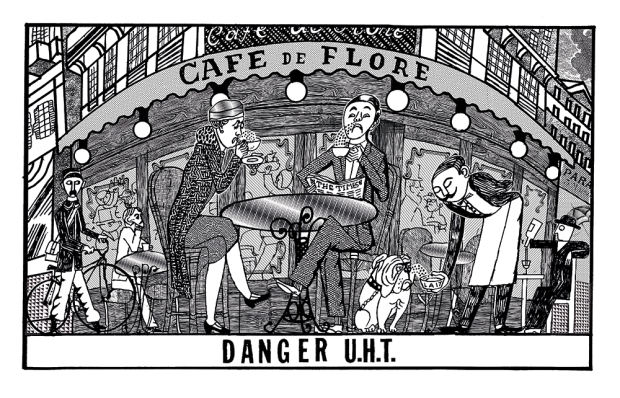When people come to Dover, it’s usually to pass through. The magnificent castle on the cliffs may be a tourist attraction in its own right, but for the most part, Dover has been a place people go through on their way to or back from the Continent. It’s never been much of a seaside destination. The rise of cheap flights, the end of duty-free and the advent of the Channel Tunnel diminished its status as a port, and the 2008 crash hit it hard. The number of vagrants, street drinkers and empty shop premises in the centre bear witness to a town that has seen better times.
Yet things are looking up. Back in May, to the surprise of Doverians and the world’s media, a new Banksy mural was unveiled on the side of an old amusement arcade in York Street. When I went to look at the work, it was clear that Dover had a tourist attraction — people were coming to see it. Surprisingly, the mural, depicting a man chipping away at one star in the EU flag, has found much favour in the town. Its ambiguous message has been a source of much discussion.
If the mural has put a smile on the face of people here, perhaps it’s because it symbolises the town’s long overdue recovery. The building it’s painted on was about to be demolished as part of the town’s regeneration programme, and the mural is currently at the centre of a huge row over whether or not it ought to be preserved.
Last year, the nearby and much-hated Burlington House — most people driving to the ferry port will have noticed this brutalist beige eyesore — was finally demolished. As we speak, a new shopping complex and cinema is under construction in its place. All its plots have been sold. Elsewhere, empty premises in Cannon Street have gradually been coming back into commercial use. And local unemployment is falling.
Even if Dover has been superficially grotty in recent years, I’ve always found its people to be the nicest in East Kent. Go into The Eight Bells Wetherspoons pub in Cannon Street or the Beano Café on Worthington Street to see the kind of warm, real-life community interaction that tends to be imagined by soap–opera writers.
Perhaps it’s because they are aware of their town’s baleful reputation in the county that Dover-ians make an extra effort with strangers; I remember Belfast folk being similarly cordial in the 1990s.
The town has also been a relatively successful melting pot. While Slovakian and Balkan immigrants who reside around the down-at-heel London Road area do live lives apart, the Polish and Baltic newcomers of the past 15 years have integrated far better. Many have bilingual children of school age, which enables contact with native English parents. You will hear Poles and natives mixing as friends in cafés, and Latvians talking to Doverians in grocery stores as their customers buy cans of lager from the Baltic.
A few years ago, when a Banksy appeared in nearby Folkestone, it was defaced. Few were surprised; East Kent is Brexit country. The fact that even Banksy, that metropolitan liberal par excellence, has put smiles on the face of Dover people is quite remarkable.
Got something to add? Join the discussion and comment below.
Get 10 issues for just $10
Subscribe to The Spectator Australia today for the next 10 magazine issues, plus full online access, for just $10.
You might disagree with half of it, but you’ll enjoy reading all of it. Try your first month for free, then just $2 a week for the remainder of your first year.














Comments
Don't miss out
Join the conversation with other Spectator Australia readers. Subscribe to leave a comment.
SUBSCRIBEAlready a subscriber? Log in